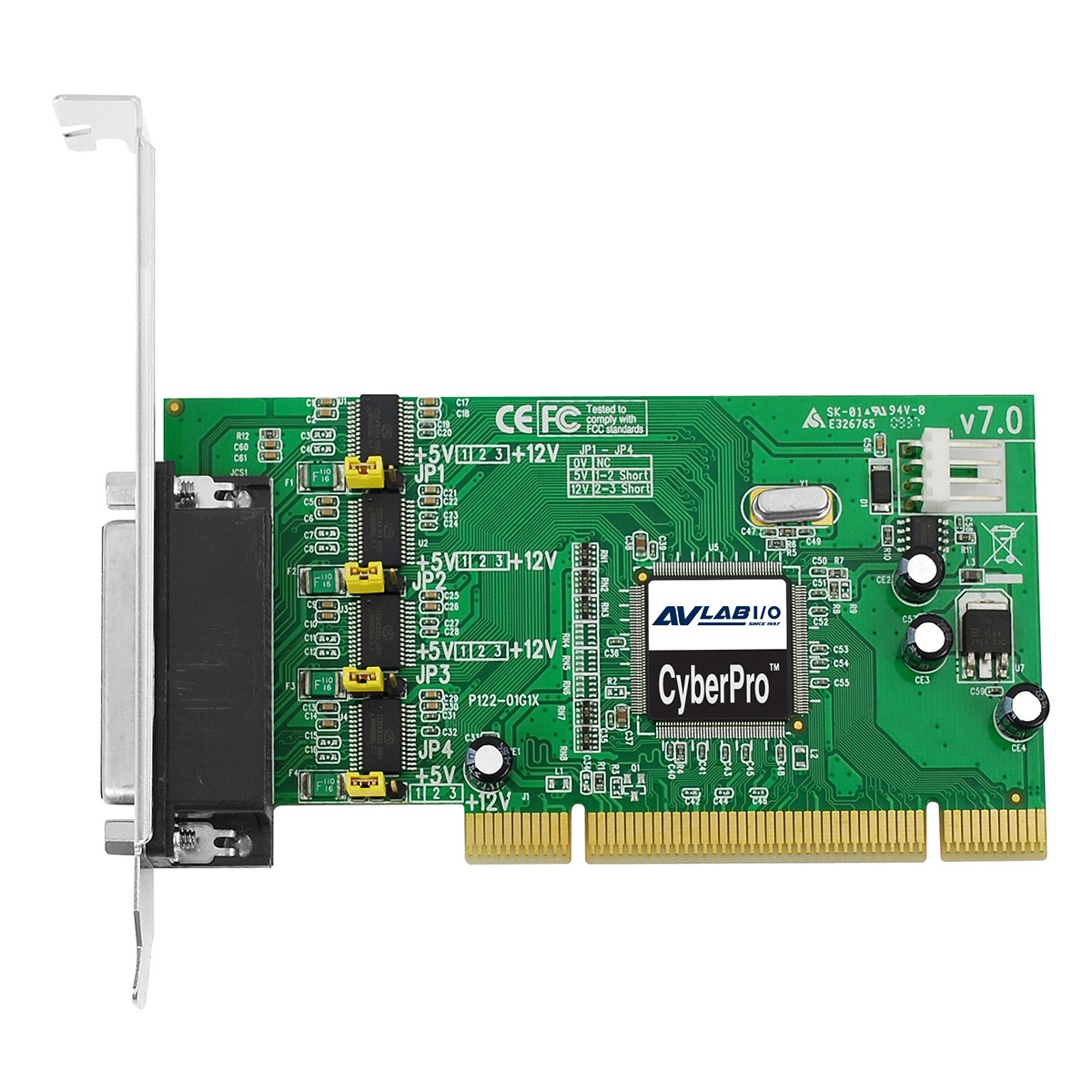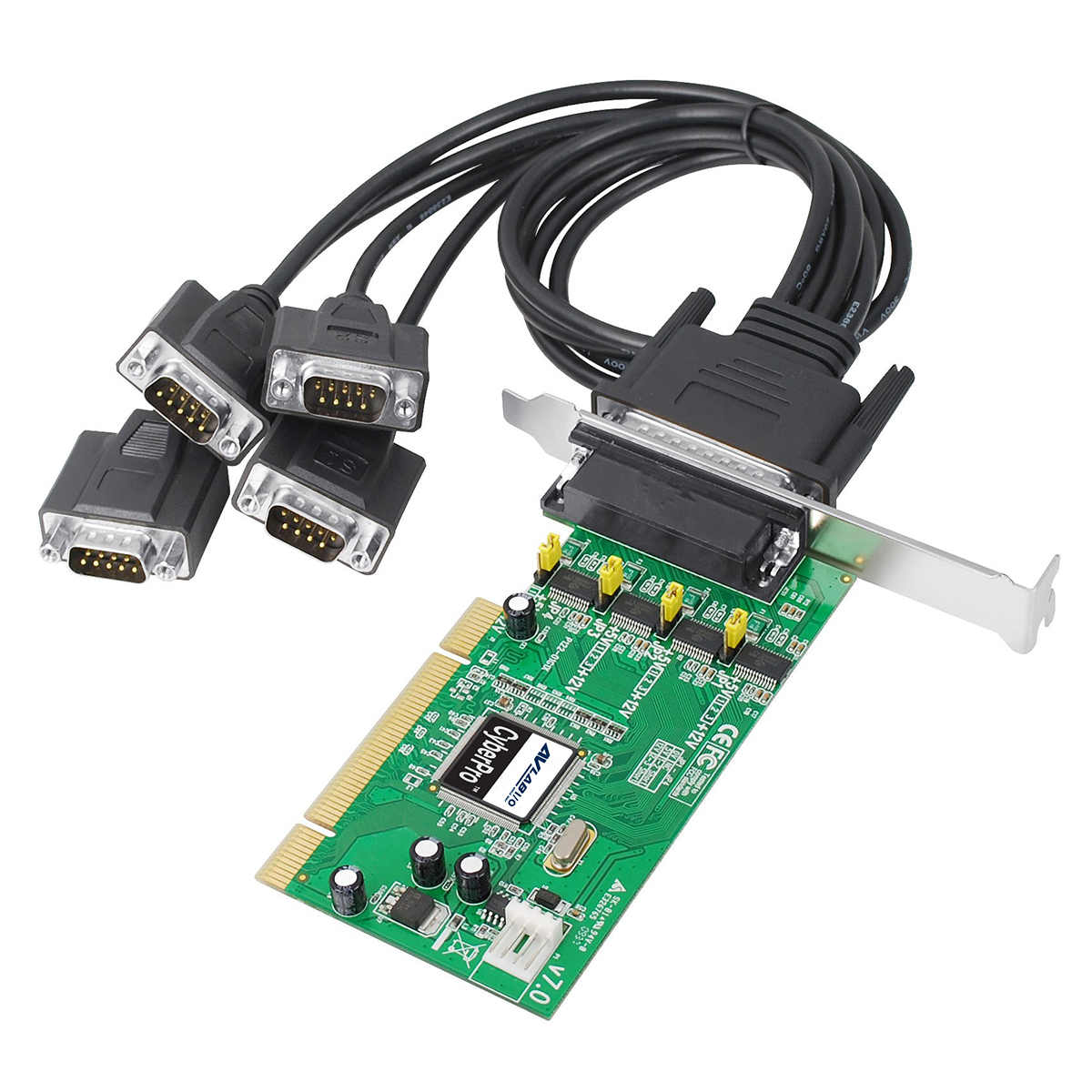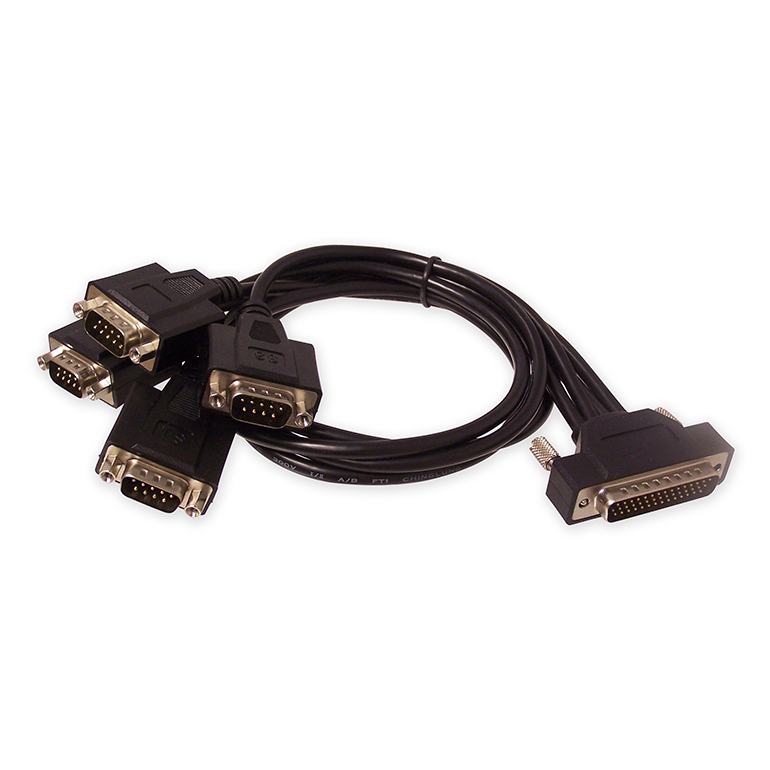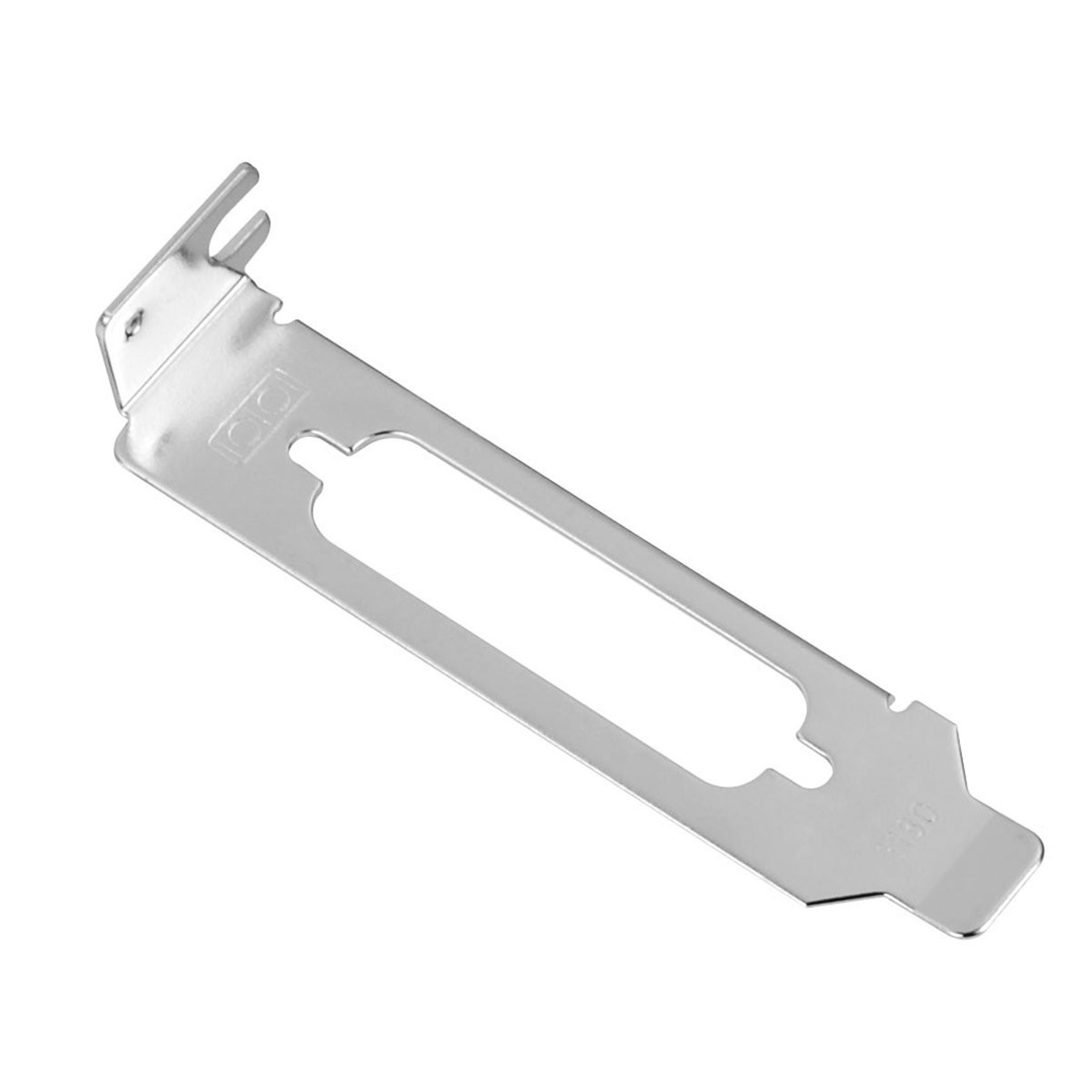- AVLAB-JJ13-1
- AVLAB Quad Port Serial PCI Card with fan-out cable for POS system, DB9 RS-232, 230Kbps, Dual Profile Bracket
■ Supports 32-/64-bit, 3.3V/5V PCI and PCI-X slots ■ Four high-speed 16550 UART serial ports (9-pin) support data rate up to 230 Kbps ■ Dual Profile design to work in standard-height and low-profile chassis with the included brackets ■ Will work as standard RS-232 serial port or with 5V or 12V power output for devices that require power (such as hand held scanners, table scanners, POS displays, etc.). Configurable via jumpers with silk-screened settings on PCB.
Eigenschaften
SUPPORTS PCI AND PCI-X SLOTS
Supports 32-/64-bit, 3.3V/5V PCI and PCI-X slots
HIGH SPEED DATA
Four high-speed 16550 UART serial ports (9-pin) support data rate up to 230 Kbps
FULL HEIGHT AND LOW PROFILE SUPPORT
Installs in full height and low profile chassis with included brackets
WORKS WITH A STANDARD RS-232 PORT OR WITH A 5V/12V POWER OUTPUT
Will work as standard RS-232 port or with 5V or 12V power output for devices that require power (such as handheld scanners, table scanners, POS displays, etc.) Configurable via jumpers with silk-screened settings on PCB.
Spezifikation
Chipset: Oxford OXuPCI954
Bus type: 32-bit PCI
Port type: Four DB9 (9-pin) RS-232 serial port, Male
IRQ sharing reduces IRQ conflicts
Built-in 32-byte FIFO buffers dramatically increase data transmit/receive speed under Windows multitasking environment
4-layer PCB board: separate layers for data & grounding. Significantly reduces signal noise and loss and delivers reliable high-speed data transfer
Enhanced bracket design to prevent bending. Connected to PCB with washered screws for a more secure connection
Supports 3.3V operation with 5V tolerance
Conforms to PCI v2.2 universal card standard. PCI-X and 64-bit compatible
Supports PME # (Power Management Event). Allows device to request a change in system power state (wake up system)
Use SMT (Surface Mount Technology) type electrolytic capacitor. Low ESR (Equivalent Series Resistance) aluminum electrolytic capacitor. Offers much improved noise suppression and achieves higher levels of performance/reliability
Use SMT (Surface Mount Technology) type crystal. Offers cleaner design over traditional DIP-type crystal. Provides greatly improved grounding, which reduces EMI emission and improves performance/reliability
Product dimensions (board only): 5" (W) x 4.72" (H) x 0.71" (D)
Product weight (board only): 0.15 lbs
Mini 4-Port Fan-out cable
■ Connectors: 4, 9-Pin, DB9, RS-232, Serial, Male
■ Length (including DB9 connectors): 22.8" +/- 0.8" (580mm +/-20mm)
■ Weight: 0.52 lbs
Certifications/Standards: FCC, CE, RoHS
Warranty: Lifetime limited
Country of origin: China
Herunterladen
FAQ
- How do I confirm that Windows detects my expansion card?
- To confirm that Windows detects your expansion card, complete the following: Press the Windows key+R, type devmgmt.msc, and press Enter. In Device Manager, under the appropriate heading, confirm that your expansion card is listed and that there isn't an exclamation mark next to it. For example, a RS-422/485 controller card would be under Ports (COM & LPT)
- How do I confirm that Windows detects my USB device?
- To confirm that Windows detects your USB device, complete the following: Press the Windows key+R, type devmgmt.msc, and press Enter. In Device Manager, under the appropriate heading, confirm that your expansion card is listed and that there isn't an exclamation mark next to it. For example, a USB device would be under Universal Serial Bus controllers.
- How can I make sure my serial port is working in Windows?
- To check whether or not an RS-232 serial port is working, perform an RS-232 loopback test by doing the following: If your serial port is not female, convert it by taking a female/female cable or gender changer and plugging it into the serial port. Take a metal paperclip or wire and cross pins 2 and 3. If you look closely at the female end, the pins should be numbered. Open a telnet session on the COM port number of the device that you are testing. Note: To open a telnet session on the COM port, you need a telnet client like PuTTY or Hyper Terminal. Windows XP comes with Hyper Terminal. When the session is open, anything you type into it you should see. The loopback test fails when you cannot see what you are typing. If the loopback test fails, make sure that the serial cable or gender changer that you are using works and that the adapter is in the correct port.







